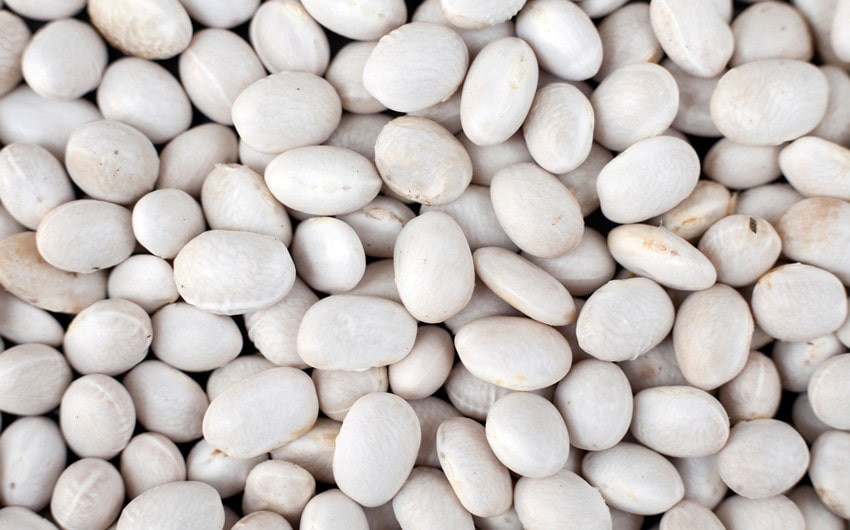Great Northern vs Cannellini: A Complete Guide to Both Beans
When it comes to cooking with white beans, you’ve probably encountered the great northern vs cannellini debate. Both beans are popular choices for soups, stews, and salads, but they’re not exactly the same. While they might look similar at first glance, each has its own unique flavor, texture, and best uses in the kitchen. Knowing the differences can help you pick the right bean for your dish, making your meals even more delicious.
Let’s dive into what sets great northern and cannellini beans apart and how to choose the best one for your recipes.
Overview of Great Northern Beans

Great Northern beans are medium-sized, white beans that are slightly oval-shaped and have a mild, nutty flavor. They are known for their delicate, smooth texture, which allows them to absorb the flavors of the ingredients they are cooked with, making them a versatile addition to many dishes. Great Northern beans are often slightly smaller than Cannellini beans, with a thinner skin, which helps them cook faster and break down more easily when simmered, lending a creamy consistency to soups and stews.
These beans are commonly used in a variety of recipes, from classic American bean dishes like baked beans and casseroles to hearty soups and chowders. Their mild flavor makes them an excellent base for dishes where the seasonings and other ingredients are meant to shine. Great Northern beans are also popular in Mediterranean and French cuisines, where they are often paired with garlic, herbs, and olive oil for simple yet flavorful side dishes.
In addition to their culinary versatility, Great Northern beans are a healthy choice, rich in fiber, protein, and essential nutrients like iron, potassium, and folate. They are low in fat and can help support heart health, regulate blood sugar levels, and provide long-lasting energy. Because of their availability and affordability, Great Northern beans are a staple in many households, offering both nutrition and versatility in the kitchen.
Whether used in a slow-cooked stew or a quick weeknight salad, Great Northern beans are a reliable and delicious ingredient that elevates a wide range of dishes.
Overview of Cannellini Beans

Cannellini beans, also known as white kidney beans, are large, creamy white beans that originated in Italy and have become a beloved staple in Mediterranean and Italian cuisine. These beans are slightly larger than Great Northern beans and have a kidney-like shape with a smooth, firm texture.
Cannellini beans are renowned for their mild, slightly earthy flavor and tender, meaty consistency, which holds up well during cooking, making them a popular choice for dishes that require longer simmering times.
Cannellini beans are often used in classic Italian dishes such as minestrone soup, pasta e fagioli, and various hearty stews. Their ability to maintain their shape when cooked makes them ideal for adding substance and texture to salads, soups, and even as a standalone side dish tossed with olive oil, garlic, and herbs.
Cannellini beans also work beautifully in dips and spreads, providing a creamy base that pairs well with fresh herbs, citrus, and spices. Because of their versatility, they are often substituted for other white beans, but their distinct texture and size set them apart.
Nutritionally, Cannellini beans are a powerhouse of plant-based protein, fiber, and essential vitamins and minerals, including iron, magnesium, and folate. They are particularly valued for their heart-healthy benefits, as their high fiber content helps lower cholesterol levels, while their low glycemic index supports blood sugar regulation. These beans are also rich in antioxidants, which help combat inflammation and support overall health.
Whether used in traditional Italian recipes or as a healthy addition to your favorite meals, Cannellini beans bring both nutritional value and a satisfying, hearty texture to the table, making them a versatile and delicious choice for cooks and food lovers alike.
Key Differences Between Great Northern and Cannellini Beans
Understanding the key differences between Great Northern and Cannellini beans can help you choose the right bean for your recipe. Although they may seem similar at first glance, their differences in size, flavor, texture, and nutritional value set them apart. Here’s a closer look at what makes each bean unique:
1. Size and Shape
Great Northern beans are medium-sized, slightly smaller than Cannellini beans, with an oval shape. They have a thinner skin, which allows them to cook faster and break down more easily, creating a creamier texture in dishes. On the other hand, Cannellini beans are larger and have a distinctive kidney shape with a slightly firmer structure. Their thicker skin helps them maintain their shape even after prolonged cooking, making them a better choice for recipes where a heartier bean is desired.
2. Texture
The texture of Great Northern beans is smooth and delicate, with a tendency to break down and blend into soups, stews, and purees. This quality makes them ideal for dishes where a creamy consistency is preferred. In contrast, Cannellini beans have a firmer, meatier texture that holds up well during cooking. This makes Cannellini beans suitable for recipes that require the beans to stay intact, such as salads or dishes with longer cooking times, like Tuscan-style soups and stews.
3. Flavor Profile
Both beans have a mild flavor, but there are subtle differences. Great Northern beans have a light, nutty taste that is slightly more delicate, allowing them to blend seamlessly with a variety of ingredients. Their mildness makes them perfect for absorbing the flavors of herbs, spices, and broths in which they are cooked.
Cannellini beans, while also mild, have a slightly earthier and richer flavor that pairs particularly well with robust Mediterranean ingredients like garlic, rosemary, and olive oil, enhancing the depth of savory dishes.
4. Nutritional Content
Nutritionally, both Great Northern and Cannellini beans are excellent sources of plant-based protein, dietary fiber, and essential vitamins and minerals. However, there are some variations. Cannellini beans generally have a higher iron content, making them a great choice for boosting iron intake, especially for those on plant-based diets.
Great Northern beans, on the other hand, are slightly lower in calories and fat, offering a lighter nutritional profile while still being rich in potassium, folate, and antioxidants that support heart health and digestion.
5. Cooking Applications
Great Northern beans and Cannellini beans can often be used interchangeably, but their different textures and flavors make them suited for specific culinary uses. Great Northern beans are best used in creamy soups, blended dips, or any dish where a softer, more blended texture is desirable. Cannellini beans are favored in recipes that require the beans to maintain their shape, such as pasta dishes, hearty salads, and stews. Knowing these differences helps you decide which bean will best complement the texture and taste of your dish.
6. Substitution Tips
While Great Northern and Cannellini beans can be substituted for each other in many recipes, understanding when to make the swap is crucial. If a recipe calls for a bean that retains its shape and texture, such as in a salad or a dish with longer cooking times, Cannellini beans are the better choice.
Conversely, Great Northern beans are ideal for recipes requiring a softer bean that blends well, like creamy soups or purees. Being mindful of these distinctions can enhance the outcome of your cooking.
Cooking Tips for Great Northern and Cannellini Beans
Cooking Great Northern and Cannellini beans can elevate your dishes by adding texture, flavor, and nutrition. Although both beans share some similarities in preparation, they have distinct characteristics that influence how best to cook them. Here are some essential tips for getting the most out of each type of bean in your recipes:
1. Pre-Soaking Beans
Pre-soaking dried beans can significantly reduce cooking time and help achieve a consistent texture. Both Great Northern and Cannellini beans benefit from soaking, which helps soften their skins and makes them easier to cook.
To soak, simply place the beans in a large bowl, cover them with plenty of water, and let them sit for 8 to 12 hours or overnight. For a quicker option, you can use the “quick soak” method: bring the beans to a boil in a pot of water, turn off the heat, cover, and let them soak for about an hour before draining and cooking.
2. Cooking Methods: Stovetop, Pressure Cooker, and Slow Cooker
Great Northern and Cannellini beans can be cooked using various methods, including stovetop, pressure cooker, and slow cooker. The stovetop method is the most traditional and allows for better control over the cooking process. To cook on the stovetop, add soaked beans to a large pot, cover with fresh water, bring to a boil, then reduce the heat and simmer gently until tender—about 45 minutes to an hour for Great Northern beans and slightly longer for Cannellini beans.
For faster results, a pressure cooker or Instant Pot can cut cooking time down to around 15-20 minutes, making it ideal for busy weeknights. A slow cooker is perfect if you prefer a hands-off approach; cook the soaked beans on low for 6-8 hours or on high for 3-4 hours until tender. Whichever method you choose, remember to avoid adding acidic ingredients like tomatoes or vinegar until the beans are fully cooked, as acids can toughen the skins.
3. Flavor Enhancements: Herbs, Spices, and Broths
Both Great Northern and Cannellini beans are like sponges when it comes to absorbing flavors, making them perfect for cooking with herbs, spices, and broths. For Great Northern beans, try adding bay leaves, garlic, thyme, and onion to the cooking water for a subtle, aromatic flavor boost.
Cannellini beans pair beautifully with rosemary, sage, and a splash of olive oil for a Mediterranean touch. Using a rich vegetable or chicken broth instead of water can also enhance the beans’ flavor, adding depth to soups, stews, and side dishes.
4. Maintaining Texture: Avoid Overcooking
While Great Northern beans tend to soften and blend well into dishes, Cannellini beans are prized for their ability to hold their shape. To maintain the distinct texture of each bean, monitor your cooking times closely. For Great Northern beans, cook until just tender but not mushy, especially if using them in salads or as a base for dips.
Cannellini beans, on the other hand, should be cooked until tender but firm, particularly if they are to be used in dishes where a hearty texture is desired. Overcooking can lead to broken or overly soft beans that lose their distinct bite.
5. Salt and Seasoning: When to Add
Timing matters when it comes to seasoning beans. It’s generally recommended to add salt toward the end of the cooking process, as adding it too early can toughen the bean skins and increase cooking time.
For both Great Northern and Cannellini beans, season with salt and other spices about 10-15 minutes before the beans are done. This allows the flavors to meld without compromising the beans’ texture. For an extra flavor kick, consider adding a splash of olive oil, a squeeze of lemon juice, or freshly chopped herbs right before serving.
6. Using Canned Beans: Quick and Easy Alternatives
If you’re short on time, canned Great Northern and Cannellini beans are convenient alternatives to dried beans. They come pre-cooked and ready to use, making them perfect for quick meals. Be sure to drain and rinse canned beans thoroughly to reduce sodium and remove the starchy liquid, which can affect the taste and texture of your dish. Canned beans can be easily substituted in any recipe, allowing you to enjoy the benefits of both Great Northern and Cannellini beans without the lengthy prep and cooking times.
Which Bean to Use: Great Northern vs. Cannellini?
Choosing between Great Northern and Cannellini beans can make a big difference in the final taste and texture of your dish. Although these beans are often used interchangeably, understanding their distinct qualities can help you make the best choice based on your culinary needs. Here’s a guide to help you decide when to use Great Northern beans versus Cannellini beans in your cooking.
1. For Soups and Stews
When it comes to soups and stews, both beans have their strengths, but the choice depends on the texture you’re aiming for. Great Northern beans are excellent for creamy soups and stews where you want the beans to break down slightly and blend into the broth. Their delicate texture adds a smooth, velvety feel to the dish, making them perfect for bean-based soups like navy bean soup, chowders, and blended vegetable soups.
Cannellini beans, on the other hand, are ideal when you want the beans to retain their shape and provide a firmer texture. They are commonly used in Italian-style soups like minestrone or pasta e fagioli, where the beans hold up well alongside pasta, vegetables, and meats. Cannellini beans add a hearty, meaty bite to soups and stews, making them a great option when you want the beans to stand out as individual components rather than blending into the background.
2. For Salads and Cold Dishes
If you’re preparing a salad or a cold bean dish, Cannellini beans are generally the better choice. Their firmer texture makes them perfect for tossing into salads without falling apart, adding a satisfying bite and a subtle, earthy flavor. Cannellini beans pair beautifully with fresh greens, tomatoes, cucumbers, and vinaigrettes, making them a go-to for Mediterranean-style salads and grain bowls.
Great Northern beans, while still usable in salads, tend to have a softer texture that may break down more easily when mixed with other ingredients. They can be a good choice if you’re looking for a creamier, less distinct texture in your salad, such as in a tuna and bean salad or a mashed bean dip. If you prefer your beans to remain intact in cold dishes, Cannellini beans will typically perform better.
3. For Casseroles and Baked Dishes
In baked dishes and casseroles, both beans can be used, but they will deliver different textures. Great Northern beans are excellent for baked dishes where a creamier consistency is desired, such as baked beans or bean casseroles. Their ability to absorb flavors makes them blend seamlessly with other ingredients like bacon, onions, and rich sauces, creating a cohesive dish with a soft, comforting texture.
Cannellini beans are a better option if you want more defined beans within your casserole, especially in recipes that include robust ingredients like sausage, kale, or tomatoes. They hold their shape well during baking, adding substance and texture to each bite. Dishes like baked pasta with beans or hearty vegetable bakes benefit from Cannellini beans’ ability to maintain their form and provide a contrasting texture to softer ingredients.
4. For Dips and Purees
When it comes to making dips, spreads, or purees, Great Northern beans are generally the preferred choice due to their smooth, creamy texture when blended. They mash easily, creating a rich and velvety consistency that’s perfect for bean dips, white bean hummus, or as a spread on toast. Their mild flavor allows them to absorb spices, herbs, and other seasonings well, making them versatile for various flavor profiles.
While Cannellini beans can also be used in dips, they tend to create a thicker and slightly chunkier texture, which may not blend as smoothly as Great Northern beans. If a thick, rustic dip is what you’re after, Cannellini beans can still work, but for a silky, more refined texture, Great Northern beans are your best bet.
5. For Hearty, Standalone Bean Dishes
If you’re preparing a dish where the beans are the star, like a classic Italian bean stew or a Tuscan bean and kale dish, Cannellini beans are often the top choice. Their larger size, firmer texture, and ability to hold up under longer cooking times make them ideal for dishes that center around the beans themselves. Cannellini beans offer a meaty, satisfying bite that adds substance to any meal.
Great Northern beans can also be featured in standalone dishes, especially those that highlight their creamier texture. They are perfect for comforting, homey dishes like a classic white bean casserole or a bean and ham soup. If your goal is to create a dish with a soft, melded texture, Great Northern beans will shine.
6. Substituting One for the Other
While Great Northern and Cannellini beans can often be used interchangeably, it’s important to consider the impact on texture and flavor. If you’re in a pinch and need to substitute one for the other, think about the desired outcome of your dish. For recipes where a firmer, more structured bean is essential, Cannellini beans are the better choice. Conversely, for dishes that benefit from a softer, creamier bean, Great Northern beans will deliver the best results.






